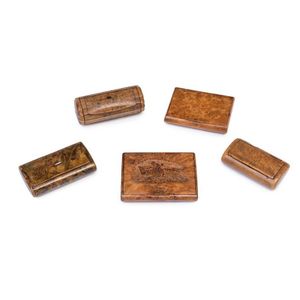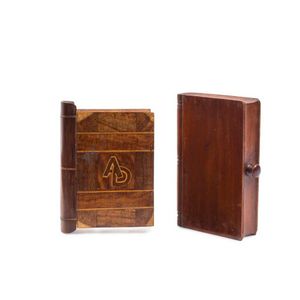Eastern Floral Carved Bracelet
A vintage Eastern silver gilt and carved ivory panelled wide bracelet, the four rectangular panels pierced and carved with florals, each framed by fine scroll and floral wirework decoration. Width 3.3 cm
You must be a subscriber, and be logged in to view price and dealer details.
Subscribe Now to view actual auction price for this item
When you subscribe, you have the option of setting the currency in which to display prices to $Au, $US, $NZ or Stg.
This item has been sold, and the description, image and price are for reference purposes only.
- Ivory - Ivory is a hard white material that comes from the tusks of elephants, mammoth, walrus and boar, or from the teeth of hippopotamus and whales. The ivory from the African elephant is the most prized source of ivory. Although the mammoth is extinct, tusks are still being unearthed in Russia and offered for sale.
Ivory has been used since the earliest times as a material for sculpture of small items, both in Europe and the east, principally China and Japan.
In Asia ivory has been carved for netsuke, seals, okimono, card cases, fan supports, animals and other figures and even as carved tusks.
In the last 200 years in Europe ivory has been used to carve figures, for elaborate tankards, snuff boxes, cane handles, embroidery and sewing accessories, in jewellery and as inlay on furniture. Its more practical uses include being used for billiard balls, buttons, and a veneers on the top of piano keys.
The use and trade of elephant ivory have become controversial because they have contributed to Due to the decline in elephant populations because of the trade in ivory, the Asian elephant was placed on Appendix One of the Convention on International Trade in Endangered Species (CITES), in 1975, and in January 1990, the African elephant was similarly listed. Under Appendix One, international trade in Asian or African elephant ivory between member countries is forbidden. Unlike trade in elephant tusks, trade in mammoth tusks is legal.
Since the invention of plastics, there have been many attempts to create an artificial ivory
Visually similar items

Two Japanese gold lacquer boxes, Meiji period (1868-1912), 6.2 cm square and the larger, 9 x 7 cm
Sold by
in
for
You can display prices in $Au, $US, $NZ or Stg.

*A pair of gold cufflinks, rectangular form with a Chinese symbol;9ct gold. Weight 7.4g
Sold by
in
for
You can display prices in $Au, $US, $NZ or Stg.

A collection of five Georgian walnut and birch snuff boxes, circa 1800, one carved with a horse and jockey and an unusual tubular box, widest 9 cm
Sold by
in
for
You can display prices in $Au, $US, $NZ or Stg.

Two Australian book boxes, cedar, blackwood, huon pine, myrtle and pine, 19th century 18 cm and 19 cm high
Sold by
in
for
You can display prices in $Au, $US, $NZ or Stg.
